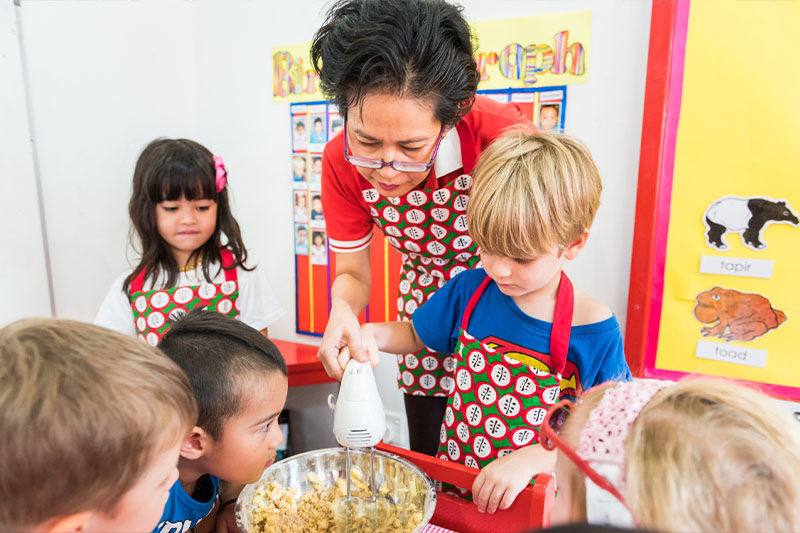What to look out for in Physical Development
By age 2, your child would be indicating a certain prowess in body movement. Be it in climbing, throwing, kicking and running (amidst some tripping and falls). They should also have some motor-coordination skills and be able to hold their utensils or stationery in a manner proper to their age. Preschool can help further develop these physical abilities. Additionally, a child who has achieved these physical milestones may find it easier to navigate the new physical environment at preschool.
What to look out for in Social Development
Social development often occurs alongside a child’s emotional development. As infants grow into toddlerhood, their innate curiosity will begin to show through their interaction with the environment and those around them. Keep an eye out for learned behaviour from parents or caretakers. These are also indicators that a child is ready to absorb new information, and can benefit from preschool. At preschool, toddlers gain significant academic advantage from a structured learning programme. Through engagement with educators and other peers, they also learn to regulate their behaviour and establish a positive relationship with others.
What to look out for in Emotional Development
As parents, the ‘terrible twos’, is a familiar term. At age 2, temper tantrums in children are common. Because toddlers lack understanding and social skills, they may express their emotions the only way they know how; crying, shouting and even kicking. However, it is also the age where they slowly learn to communicate their wants and needs to their parents with basic verbal and non-verbal skills. Preschool can help a child better express these emotions and enhance their communication skills through extra-curricular activities, and collaboration with other children and educators.
What to look out for in Cognitive Development
Cognitive development in children includes focused attention, as well as growth in logic and reasoning. Playtime is one of the best ways to observe your child’s cognitive progress. It’s where they are able to explore and figure out solutions to the everyday challenges they face. A child displaying signs of positive cognitive development also benefits from the prepared learning environment at preschool. Children are given countless opportunities to boost cognitive abilities.

Children are little explorers; curious and creative individuals with a unique mind. Hence, it is necessary to allow them a safe and healthy learning environment where they can learn, grow and develop as all-rounded individuals. Early Childhood Education can have a lasting impact on the life of the children. A little goes a long way, so put your child in preschool earlier and witness the positive difference your action can make.






